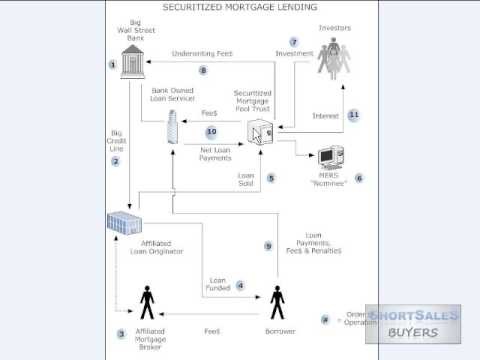HFN Strategy Focus Report Securitized Credit
Post on: 10 Июнь, 2015 No Comment

HFN Strategy Focus Report: Securitized Credit
Overview: Securitized Credit Hedge Funds
The HFN active and inactive databases have information on 166 unique fund products with a primary strategy of investing in securitized credit related securities. Securitized credit includes Asset and Mortgage Backed Securities (ABS, MBS), and sub-classifications for residential or commercial real estate mortgages (CMBS, RMBS) and derivatives of these and other corporate obligations, such as Collateralized Mortgage, Debt or Loan Obligations (CMO, CDO, CLO).
Securitized credit strategies have returned an average of 79.5% in the last 24 months compared to 35.6% and 88.5% for all hedge funds and the S&P 500 Total Return Index, respectively.
HFN estimates total assets in funds investing in securitized credit strategies of $79.1 billion at the end of February 2011.
Of securitized credit funds, ABS focused strategies have the best average performance over the last 12 months, +55.7%, followed by funds focused on RMBS, +47.0%.
This report breaks down aggregated returns for all active and inactive funds focused on securitized strategies across a wide variety of sub-classifications including; primary securitized product (ABS, MBS, CDO or combination), primary MBS focus (residential, agency, non-agency or commercial), strategy applied (value-oriented, distressed or arbitrage) and regional focus of securitized assets (U.S. Europe or Global).
Total Asset Levels and Flows Securitized Credit Funds
HFN has not historically tracked AUM and net investor flows for sub-classifications of securitized credit strategies, with the exception of mortgages focused funds.
HFN estimates total AUM in securitized credit strategies surpassed their prior peak (set in Q2 2007) in Q4 2010 and stand at $79.1 billion at the end of February 2011. Mortgage related strategies account for the majority of assets.
Multi-product (combination ABS, CDO, etc & MBS) focused funds attracted the lions share of assets during the run-up to the financial crisis and accounted for the vast majority of the decline. Mortgage focused funds again account for the majority of securitized product focused AUM.
Mortgage focused strategy fund AUM increased sharply in 2009 and 2010. Investor inflows were strong in 2009 and slowed in early 2010 before resuming in Q4 2010. Performance increased AUM significantly during this time.
Investors added an estimated $6.2 billion to mortgage focused funds in 2010. Performance increased AUM an estimated $8.8 billion during the year.
Although the majority of AUM again appears to be concentrated in mortgage focused strategies, the group exhibits noticeable diversity. It is more common for fund descriptions to indicate a focus on MBS, but with the ability to invest across the securitization universe.
Composition of Securitized Credit Funds in HFN Database
Hedge funds focusing on securitized credit strategies first began to launch in the mid-1990s with MBS focused strategies. It wasnt until 2003, when the asset securitization craze was running full bore, that fund launches increase dramatically with a focus on ABS and derivative products. Fund launches in 2003-2005 nearly doubled the existing number of securitized credit funds and the trend continued through the financial crisis.
New MBS and securitized credit fund launches tracked by HFN peaked in 2008, while the hedge fund industry had its smallest number of launches in the eight prior years. Many of these funds were launched to take advantage of the dislocations in the securitized markets after the crisis. It is likely this repopulation of funds that resulted in relatively muted losses reported throughout 2008.
Fund launches in 2009 were in-line with the strong pre-crisis figures, but numbers in 2010 appear to have slowed. The 2010 data should not be viewed as a definite slowdown as there is a lag period between a funds launch and its entrance into a commercial database.
The average assets-in-strategy (AiS, and includes classes that may not report to HFN) for securitized focused funds is $365.12 million. Assets appear concentrated in a number of large funds as the median AiS is $179.0 million.
The vast majority of funds have operations located in the U.S. 87%, compared to 57% for the broad hedge fund industry.
Comparison by Primary Product Focus
The table and graph to the right illustrate performance from funds based on their self-stated primary investment focus; ABS, MBS or CDOs. There are not a large number of ABS and CDO focused funds from which to gather information, but what is available can provide some interesting insight.
The information shows that outsized returns have slowly dissipated, but are still far above the aggregate of the hedge fund industry. ABS focused strategies by far had the largest swings in performance and MBS the least. However, given that these types of funds were investing in strategies tied to products at the heart of the financial crisis, it is prudent to assume there may be a high level of survivorship bias in the information, which we will look at in more detail.
Interestingly, all ABS funds reporting performance in Q3 2007 have continued to report returns to HFN. This implies the performance swings shown in Figure 5 for this classification is indicative of actual losses and recoveries during and after the crisis. Conversely, 45% of MBS focused funds remain and none of the CDO funds reporting in Q3 2007 remain active.
Figure 6 is the same chart as Figure 5, but only contains funds which were active in Q3 2007 and remain active in February 2011. There are a couple of points that jump out:
Even mid-crisis, the black MBS line in Figure 6 bottoms out near +6% compared to 0% for all MBS which means those funds launched near the inception of the crisis performed much worse than those with track records extending back much farther. Additionally, there is virtually no difference in returns post crisis.
Legacy CDO funds experienced losses more in-line with ABS strategies and also rebounded much faster than newer CDO funds initially rose. However, this does not appear to have been sufficient to warrant remaining in existence.

Comparison by Strategy Utilized
By reviewing fund descriptions, HFN is able to break down securitized product focused fund performance by the types of strategies applied towards these securities. Three points stand out most:
The overwhelming failure of funds that focused on leveraged exposure to securitized assets and the lack of repopulation within that strategy.
The obvious success of funds which have focused on determining actual value in carnage of the crisis.
The up-and-down nature of returns from funds focusing on pricing inefficiencies and dislocations in the markets (opportunistic). This group was influenced by a small number of funds with a negative view on commercial real estate valuations heading into the financial crisis.
Regional Comparison
HFN is also able to classify these funds by the primary origination location of the securitized assets in which they invest. The majority of funds focus primarily on U.S. originations or a mix of U.S. and European, classified as Global, underlying assets. There also exists a smaller, but meaningful, number which focus exclusively on European securitized assets.
The return streams generated by these funds indicate a higher concentration of MBS focus within the U.S. group with the majority of the Europe focused funds also focused more heavily around MBS than ABS or their derivatives. The reason for the deviation in performance between the two may be due to either the European assets deteriorating more rapidly, or that the U.S. market is more seasoned and allows for more flexible approaches to trading the assets.
Mortgage-Backed Security Sub-classifications
MBS funds reporting to HFN typically state in what part of the market they primarily focus their strategy. This includes a focus on residential or commercial real estimate sectors, or both and whether the securitizations are agency or non-agency. Additionally, HFN has classified MBS funds by primary strategy, which includes; Arbitrage, Opportunistic and Value Oriented. Figures 9-11 and the table below summarize the historical performance of these classifications.
Not all MBS fund in the HFN database offer a sub-classification for agency, non-agency or both which explains the difference between the MBS Residential and Agency/non-Agency lines in Figure 9.
Summary Analysis
Investor interest in hedge funds focused on securitized products has been strong, but dominated by mortgage related strategies, particularly in the last two quarters (Q4 2010 & Q1 2011). Returns generated by these funds have been well above the aggregate returns from the rest of the hedge fund industry, but have declined from their peaks.
Performance over the past two years has been driven by relative mis-pricings of risk as the markets were heavily dislocated following the financial crisis. Rolling 12 month performance indicate returns across most sub-classifications are returning to their pre-crisis levels which may mean that markets for securitized products are returning to a more normalized state. Whether funds can continue to generate outsized returns going forward is difficult to predict, especially given the increase in funds operating in this area.














